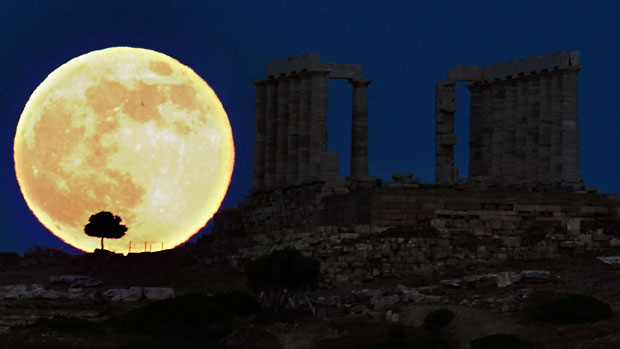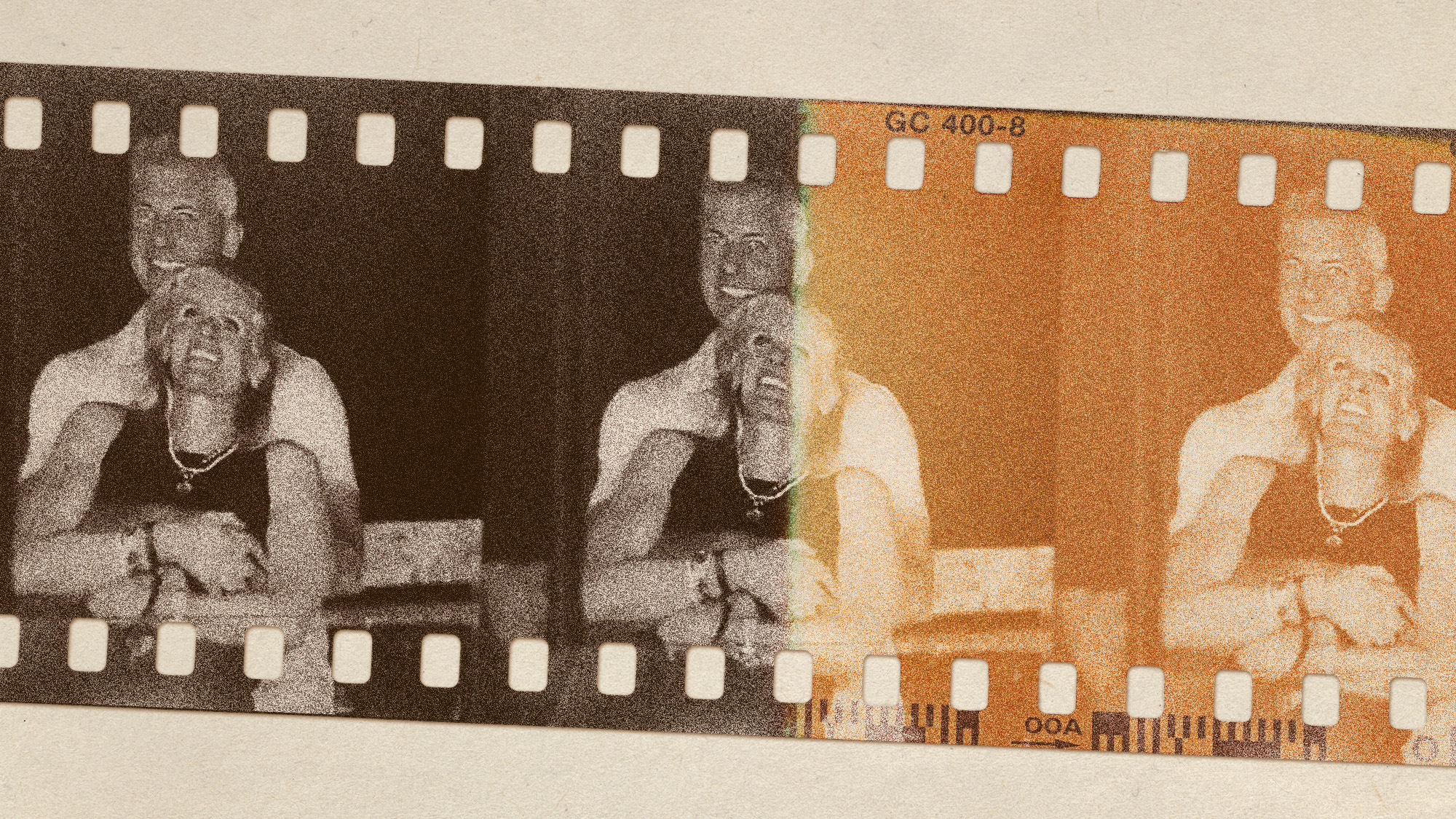What is a supermoon and when can you see it?
Today the full moon is closer to Earth than it has been for 60 years

Tonight the full moon will look bigger and brighter in the sky than it has at any time in more than 60 years as a result of it being closer to Earth than it has been since 1948. That's assuming you can see it for clouds, of course.
Because the moon's orbit around Earth is elliptical, not circular, it is sometimes nearer to Earth than it is at other times. When the moon is close to us and full, it is known as a supermoon.
The moon is around 14 per cent closer when it's at "perigee", the closest it gets to Earth on its orbit, than it is at "apogee", its furthest, says Nasa. Because it is nearer, it can shine 30 per cent more moonlight (actually reflected sunlight) onto Earth.
The Week
Escape your echo chamber. Get the facts behind the news, plus analysis from multiple perspectives.

Sign up for The Week's Free Newsletters
From our morning news briefing to a weekly Good News Newsletter, get the best of The Week delivered directly to your inbox.
From our morning news briefing to a weekly Good News Newsletter, get the best of The Week delivered directly to your inbox.
Is a supermoon a rare event?
No – it happens twice in every orbit, roughly once every 411.8 days. The nearest full moon to that point is a supermoon but others shortly before and after can also qualify. There was a supermoon on 16 October and another is due on 14 December.
Why is tonight different?
The moon's orbit is not a perfect ellipse: its route varies as other gravitational pulls in the solar system bend it out of shape, bringing it closer or further away from the Earth as it passes. The variation is tiny, however.
A free daily email with the biggest news stories of the day – and the best features from TheWeek.com
While the moon will be the nearest it has been for 60 years, the difference between this supermoon and other supermoons to the visible eye will be "negligible", says The Guardian, although it will still look bigger than a normal full moon.
I've seen the moon looking huge on other nights – was that a supermoon?
Probably not. It's more likely to be something called "moon illusion". This is a psychological effect that makes observers think the moon appears larger in the sky when it is closer to objects on the horizon. A supermoon is different, because the moon is nearer to us – and therefore appears even bigger.
Will there be mayhem?
The moon has long held a special place in folklore, from myths about werewolves to insanity – with the word "lunacy" originating from the word "lunar". Emergency services have anecdotally reported a rise in aggressive behaviour during full moons and Sussex Police even spotted a link between full moons and violent crimes in 2007.
But a 1985 review of studies on mental illness and the moon found that its impact on mental breakdowns, criminal behaviour and other disturbances has no basis in scientific data, reports Live Science.
The website also debunks the theory that a supermoon can cause disasters. While tidal forces will be particularly high and low, scientists have not found any significant link between a supermoon and natural events such as earthquakes and tsunamis, it says.
Earthquake expert Mark Quigley from the University of Melbourne told ABC it was possible that tidal stresses could trigger a quake if the pressure had been building for a long period of time and was about to rupture imminently anyway. However, he says there has never been a case where the "specific time, magnitude and location of a large earthquake has been successfully predicted in the short-term using tidal stresses".
-
 What have Trump’s Mar-a-Lago summits achieved?
What have Trump’s Mar-a-Lago summits achieved?Today’s big question Zelenskyy and Netanyahu meet the president in his Palm Beach ‘Winter White House’
-
 The most anticipated movies of 2026
The most anticipated movies of 2026The Week Recommends If the trailers are anything to go by, film buffs are in for a treat
-
 The biggest viral moments of 2025
The biggest viral moments of 2025In the Spotlight From the Coldplay concert kiss cam to a celebrity space mission, these are some of the craziest, and most unexpected, things to happen this year
-
 Nasa finds molecules on Mars
Nasa finds molecules on Marsfeature And other stories from the stranger side of life
-
 ‘Let puritanical values govern parliamentary rules’
‘Let puritanical values govern parliamentary rules’Instant Opinion Your digest of analysis from the British and international press
-
 The Week Unwrapped: martial lawlessness, asteroid action and statue sparring
The Week Unwrapped: martial lawlessness, asteroid action and statue sparringpodcast Should the culture of the British army face greater scrutiny? Can Nasa deflect asteroids away from earth? And should London’s statues be made more diverse?
-
 ‘Armageddon-style’ spacecraft to crash into asteroid
‘Armageddon-style’ spacecraft to crash into asteroidIn the Spotlight Mission is ‘first test for planetary defence’, says space agency
-
 Mike Pence's daughter hit by 'vampire' claims
Mike Pence's daughter hit by 'vampire' claimsSpeed Read Missing reflection loses votes for Republican White House hopeful Donald Trump - and other tall tales
-
 Astronaut Scott Kelly's most fascinating tweets from space
Astronaut Scott Kelly's most fascinating tweets from spaceSpeed Read Nasa commander shared snippets of life in orbit during 342 days on the International Space Station
-
 Pluto: stunning new image unveiled by New Horizons
Pluto: stunning new image unveiled by New HorizonsIn Depth 'Who would have expected a blue sky in the Kuiper Belt?' asks mission leader. 'It's gorgeous'
-
 Venus and Jupiter conjunction: how can I see 'Star of Bethlehem' event?
Venus and Jupiter conjunction: how can I see 'Star of Bethlehem' event?Speed Read Conjunction of Venus and Jupiter will 'lift our attention away from our own little world into the enormous things beyond'